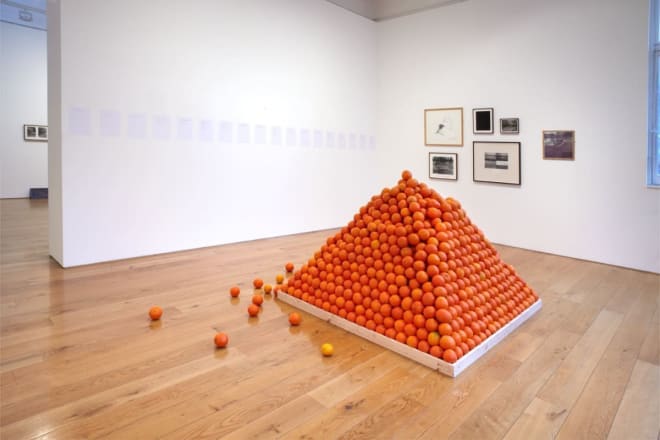Roelof Louw's sculptural and photographic works are characterised by their interactive element, with many pieces, specifically those from the 1960s and 1970s, being site-specific as well as audience-specific. His sculptures and installations in particular utilised a variety of materials, from wooden slats, cast-iron wedges, scaffolding poles, rope, neon, industrial rubber bands, rolled-up lead sheets or tape recorders documenting the movements of viewers around a space. Perhaps best known for his work Soul City (Pyramid of Oranges) (1967) – a pyramid of oranges in which he encouraged visitors to consume the fruit thereby destroying the artwork – his work wass directed toward developing a new understanding and definition of sculpture (although he resolutely denied its definition as such).
Born in South Africa, Louw moved to London in 1961. Working in London, New York and Cape Town, he participated in some of the most important moments in 20th century sculpture and exhibited in landmark exhibitions such as 'When Attitudes Become Form' at Kunsthalle Bern (1969), which later travelled to the ICA in London, and '955,000 at Vancouver Art Gallery' (1970), curated by Lucy Lippard. Other important exhibitions include 'Conceptual Art in Britain 1964-1979' (group), Tate Britain, London, UK (2016); 'A Fragile But Marvelous Life', Aspen Art Museum, Colorado, USA (2015); 'Project Space: Roelof Louw', Modern Art Oxford, Oxford, UK (2014); and 'When Attitudes Become Form: Bern 1969/Venice 2013', Fondazione Prada, Venice, Italy (2013).

